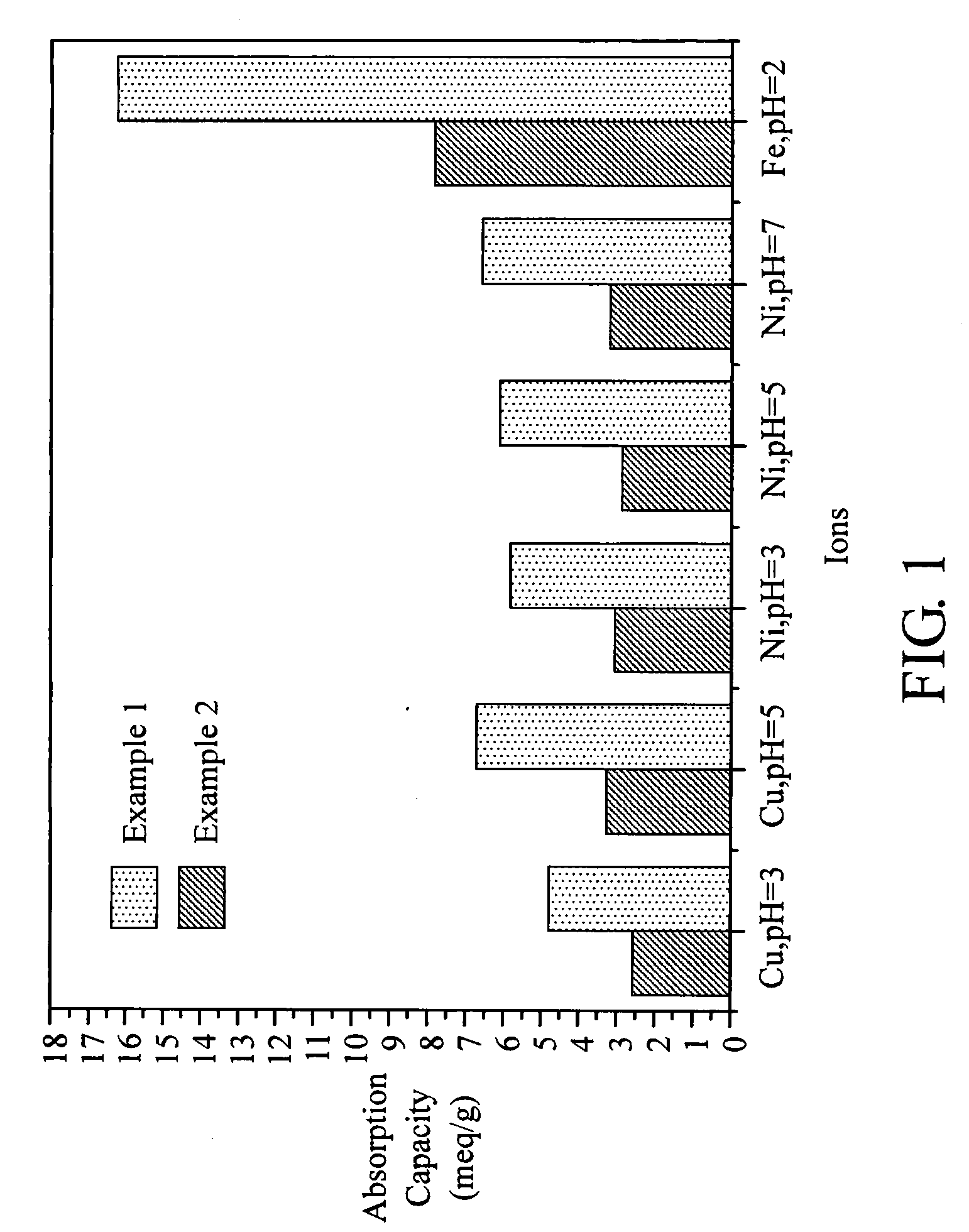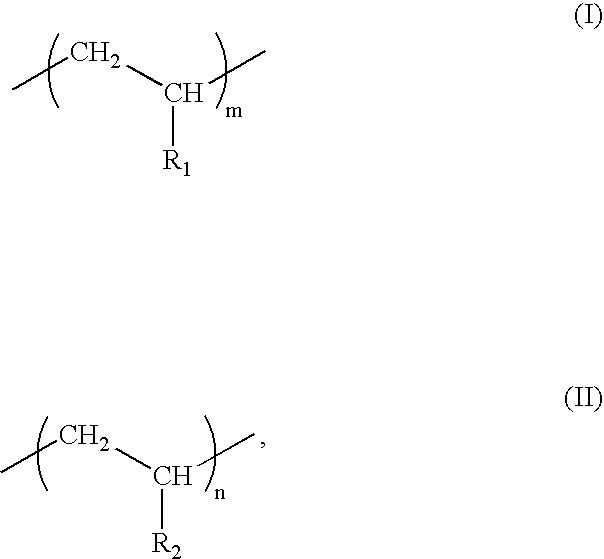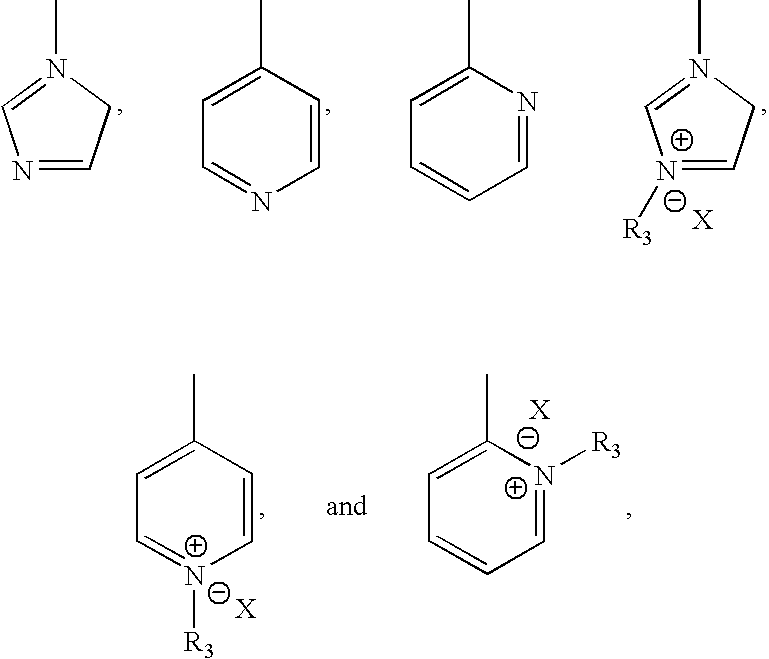Adsorptive ion-exchange material and method for filtering metal ions using the material
- Summary
- Abstract
- Description
- Claims
- Application Information
AI Technical Summary
Benefits of technology
Problems solved by technology
Method used
Image
Examples
example
Example 1
[0026]20.0 g of sodium styrenesulfate, 10.0 g of 4-vinyl pyridine, 1.0 g of sodium dodecyl sulfate (SDS) and 100.0 g of deionized water were dissolved in a reaction flask, stirred under N2 atmosphere at 70° C. A solution containing 0.3 g of potassium persulfate (KPS) in 10 mL of deionized water was slowly added into the reaction flask, kept at 70° C. for 3 hours. After the polymerization reaction was completed, deionized water was added into the reaction flask to dilute the solution. The diluted polymer was dripped into a sodium hydroxide (NaOH) solution for re-precipitation. After purification, 29 g polymer was obtained. (molecular weight=899,599 g / mole)
example 2
[0027]10.0 g of sodium styrenesulfate, 20.0 g of 4-vinyl pyridine, 2.0 g of sodium dodecyl sulfate (SDS) and 100.0 g of deionized water were dissolved in a reaction flask, stirred under N2 atmosphere at 70° C. A solution containing 0.3 g of potassium persulfate (KPS) in 10 mL of deionized water was slowly added into the reaction flask, kept at 70° C. for 3 hours. After the polymerization reaction was completed, deionized water was added into the reaction flask to dilute the solution. The diluted polymer was dripped into a sodium hydroxide (NaOH) solution for re-precipitation. After purification, 28.7 g polymer was obtained. (molecular weight=648,596 g / mole)
example 3
[0028]10.0 g of sodium styrenesulfate, 10.0 g of 1-vinyl imidazole, 1.0 g of sodium dodecyl sulfate (SDS) and 100.0 g of deionized water were dissolved in a reaction flask, stirred under N2 atmosphere at 70° C. A solution containing 0.2 g of potassium persulfate (KPS) in 10 mL of deionized water was slowly added into the reaction flask, kept at 70° C. for 3 hours. After the polymerization reaction was completed, deionized water was added into the reaction flask to dilute the solution. The diluted polymer was dripped into a sodium hydroxide (NaOH) solution for re-precipitation. After purification, 18.4 g polymer was obtained. (molecular weight=530,000 g / mole)
PUM
| Property | Measurement | Unit |
|---|---|---|
| Diameter | aaaaa | aaaaa |
| Diameter | aaaaa | aaaaa |
| Equivalent per mass | aaaaa | aaaaa |
Abstract
Description
Claims
Application Information
 Login to View More
Login to View More - R&D
- Intellectual Property
- Life Sciences
- Materials
- Tech Scout
- Unparalleled Data Quality
- Higher Quality Content
- 60% Fewer Hallucinations
Browse by: Latest US Patents, China's latest patents, Technical Efficacy Thesaurus, Application Domain, Technology Topic, Popular Technical Reports.
© 2025 PatSnap. All rights reserved.Legal|Privacy policy|Modern Slavery Act Transparency Statement|Sitemap|About US| Contact US: help@patsnap.com



